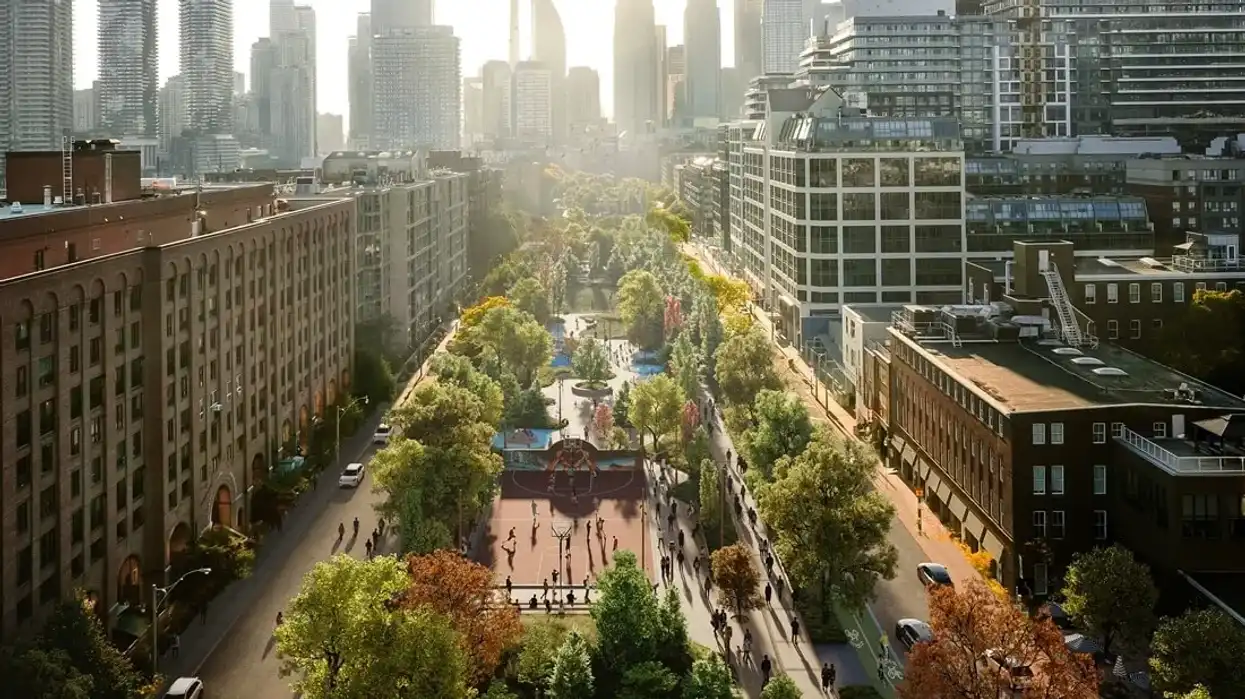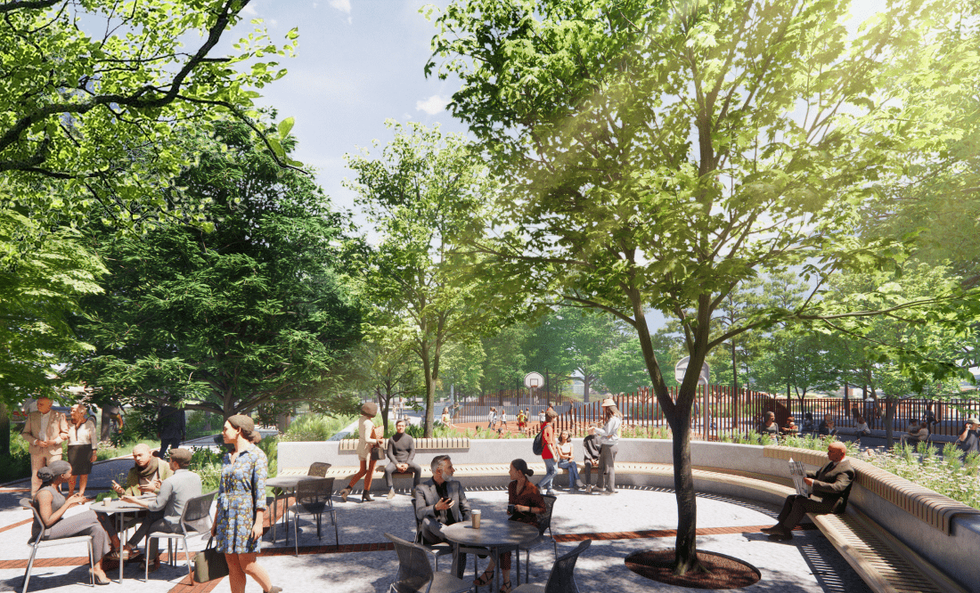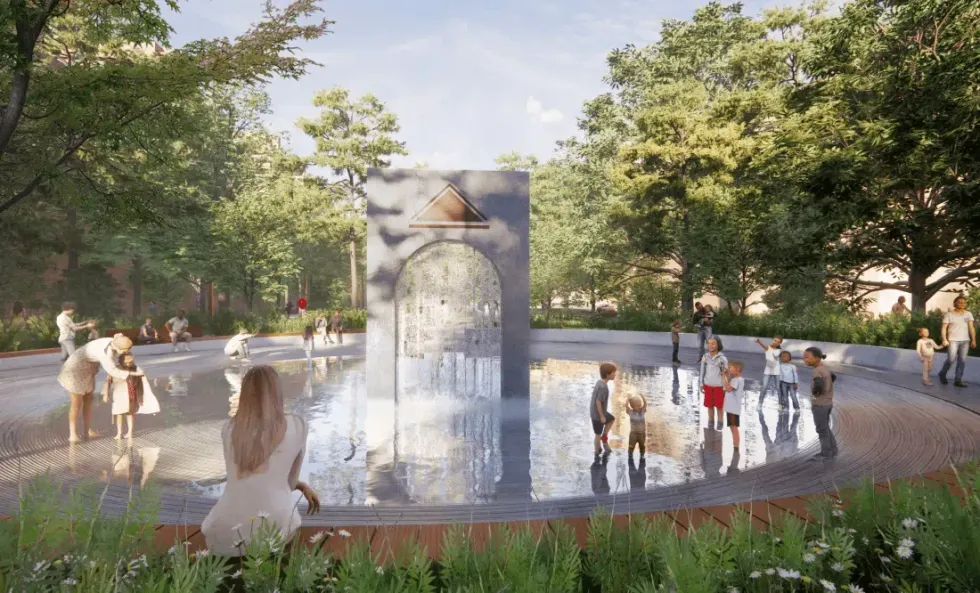The long-time crown jewel for children of Toronto's St. Lawrence Market neighbourhood, David Crombie Park, is getting a makeover that will further unite nature and the community. The 40-year-old community park, which sits on The Esplanade between Jarvis and Berkeley and is named after Toronto’s former mayor (1972-78), remains a much-used local staple, with local residents filling its bustling basketball courts, off-leash dog park, and playgrounds.
But its aging infrastructure has admittedly seen better days.
So, the City of Toronto undertook extensive public consultation over a multi-year time period to reimagine the breezy and tree-lined piece of downtown land. The City turned to leading design and consultancy firm Arcadis and esteemed Copenhagen-based landscape architecture and design firm SLA for the redesign of the nearly two-hectare park.
Based on valuable public feedback, the new design integrates Indigenous place-keeping in its enhancement of the greenspace, which spans across seven blocks along The Esplanade. This includes designs by Indigenous-owned Taw Architects, which feature safe, designated space for Indigenous community members to have a sacred fire, Seven Sacred Teachings boulders in the children’s playground, and opportunities to learn the Anishinaabe language.
“Taking cues from the original masterplan of the park, we opted for a quite humble and considerate approach,” said Rasmus Astrup, senior partner and design principal at SLA and the project’s design lead. “By studying the park’s history, usage, values, and importance to the local community, we proposed a three-stringed design strategy: To preserve, revitalize, and unite.”
The design preserves the historical character and heritage of David Crombie Park by maintaining as much of the existing structures and materials as possible. This means retaining as much of its concrete walls, trees, and sports courts as possible. It will also preserve its iconic David Crombie arch. This decision is part of the revamp’s focus on sustainability. Further to this initiative are the introduction of new features like wooden seats, benches, and platforms and the addition of natural planting and landscape zones that will create a series of new and biodiverse habitats for local species.
“The use of Dynamic Carbon Modelling to quantify embodied carbon for the proposed development scheme of the iconic David Crombie Park is an essential component of the project’s design, ensuring we offset the project’s carbon footprint through carbon sequestration,” says Neno Kovacevic, Principal of Placemaking and Landscape Architecture at Arcadis. “Ultimately, the project aims to reach carbon neutrality 15 years after its completion and climate positivity every year after.”
According to Arcadis, the design will facilitate a sense of community by strengthening the park’s main promenade, supporting active mobility, introducing a new social programs, and connecting the park to the wider neighbourhood. The park will still house perhaps its biggest draw in the summer months, a circular wading pool. Two aging playgrounds will also be replaced in the revamp.
The park’s redevelopment will also add new cycling infrastructure and streetscape elements to better connect The Esplanade with Mill Street. “With our design for the David Crombie Park Revitalization Project, we have aimed for a loving renovation of a very beloved park. Being from Copenhagen, I cannot wait to bike along the renovated park in the soundscape of birds singing and people socializing in City Nature,” says Astrup.
Construction for the park and cycle track is slated to begin in Spring 2025 and be completed in 2026. In the meantime, SLA has four other Toronto projects on the go. The nature-focused design studio is behind the Quayside development on the waterfront (just a few blocks from David Crombie park), the redesign for the neighbouring St. Lawrence Centre for the Arts, and the masterplan for the large-scale redevelopment of the former Downsview airport land.























